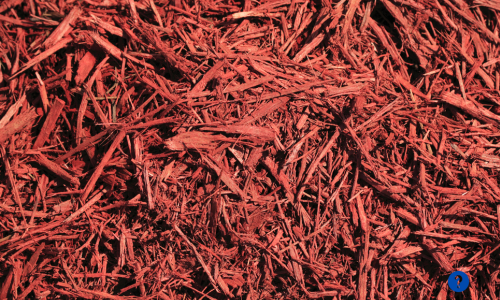Mulch is a popular landscaping material that helps retain soil moisture, regulate temperature, and improve aesthetics in gardens and yards. The cost of mulch varies widely depending on the type, quantity, and where it’s purchased. This article provides a detailed breakdown of mulch costs and the factors that influence pricing, helping you make an informed decision for your landscaping needs.
Factors That Affect the Cost of Mulch
- Type of Mulch
- Organic (e.g., wood chips, bark, straw) tends to be less expensive than decorative or specialty mulches.
- Inorganic (e.g., rubber, stone) is more durable but costs more upfront.
- Quantity Purchased
- Bulk purchases (by the cubic yard) are cheaper per unit than bagged mulch.
- Delivery and Installation
- Delivery fees or professional installation can significantly increase costs.
- Geographic Location
- Prices vary by region due to material availability and demand.
Cost of Different Types of Mulch
Type of Mulch |
Average Cost per Bag (2 cu ft) ($) |
Average Cost per Cubic Yard ($) |
Description |
|---|---|---|---|
Shredded Hardwood |
3–6 |
20–40 |
A common and affordable organic mulch. |
Bark Mulch |
4–7 |
25–45 |
Available in pine, cedar, or cypress varieties. |
Colored Mulch |
5–8 |
30–50 |
Dyed for aesthetics; available in red, black, etc. |
Rubber Mulch |
7–12 |
80–120 |
Durable and made from recycled tires. |
Stone or Gravel Mulch |
8–20 |
50–150 |
Long-lasting, ideal for decorative use. |
Straw or Hay Mulch |
4–10 (per bale) |
30–60 (equivalent) |
Excellent for vegetable gardens and soil health. |
Compost Mulch |
2–5 |
10–20 |
Eco-friendly and nutrient-rich. |
Bagged Mulch vs. Bulk Mulch
Factor |
Bagged Mulch |
Bulk Mulch |
|---|---|---|
Cost |
3–8 per bag (2 cu ft) |
20–50 per cubic yard |
Convenience |
Easier to transport and store |
Requires delivery or large vehicles |
Coverage |
Best for small areas |
Cost-effective for large areas |
Delivery |
Not required |
May include additional fees |
Delivery and Installation Costs
- Delivery Fees
- Delivery typically costs $50–150 depending on distance and volume.
- Some suppliers waive delivery fees for large orders.
- Professional Installation
- Costs range from $40–100 per cubic yard, including spreading.
- Mulching services are often bundled with landscaping packages.
How Much Mulch Do You Need?
To calculate the amount of mulch required:
- Measure the area to be mulched in square feet.
- Multiply by the desired depth in inches.
- Divide by 324 (conversion factor for cubic yards).
Example:
For a 500 sq. ft. garden with a 3-inch mulch depth:
(500×3)÷324=4.63(500 × 3) ÷ 324 = 4.63 cubic yards needed.
Cost Estimation for Mulching a Yard
Area Size (Sq. Ft.) |
Depth (Inches) |
Mulch Required (Cubic Yards) |
Cost for Hardwood Mulch ($) |
Cost for Colored Mulch ($) |
|---|---|---|---|---|
100 |
2 |
0.62 |
12–25 |
20–30 |
500 |
3 |
4.63 |
92–185 |
140–230 |
1,000 |
3 |
9.26 |
185–370 |
280–460 |
Hidden Costs to Consider
- Weed Barriers
- Cost: $0.30–0.50 per square foot.
- Installing fabric under mulch prevents weed growth and prolongs mulch life.
- Replacement Frequency
- Organic mulch decomposes and needs replacement every 1–2 years.
- Inorganic mulch, like rubber or stone, is long-lasting but may require periodic cleaning.
- Maintenance
- Raking, fluffing, and replenishing mulch incur additional labor costs if outsourced.
Tips to Save Money on Mulch
- Buy in Bulk
- For large areas, purchasing mulch by the cubic yard is more cost-effective.
- Use Local Suppliers
- Local nurseries or garden centers may offer lower prices than big-box stores.
- Look for Free Mulch Programs
- Many cities provide free mulch made from recycled yard waste.
- DIY Installation
- Save on labor costs by spreading mulch yourself.
Frequently Asked Questions
1. How much does a cubic yard of mulch cover?
One cubic yard of mulch covers approximately 100 square feet at a depth of 3 inches.
2. How often should I replace mulch?
Organic mulch should be replaced every 1–2 years, depending on decomposition and weather conditions.
3. Can I get free mulch?
Yes, many municipalities offer free mulch through recycling programs. Contact your local public works department for details.
4. Is rubber mulch worth the cost?
Rubber mulch is more expensive upfront but lasts longer and requires less maintenance, making it cost-effective for certain applications.
5. What type of mulch is best for gardens?
Shredded hardwood and compost mulch are ideal for gardens as they improve soil health while providing effective coverage.
6. Does colored mulch fade?
Yes, dyed mulch can fade over time, especially in direct sunlight. Premium brands may last longer.
The cost of mulch varies widely based on type, quantity, and additional services. Whether you’re covering a small garden bed or landscaping a large yard, understanding these factors will help you choose the right mulch for your budget and needs. From affordable hardwood to premium stone or rubber options, there’s a mulch solution for every project.




